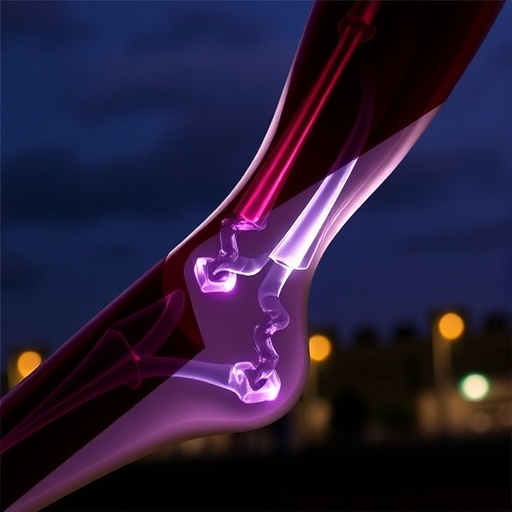
Credit: IU School of Medicine
INDIANAPOLIS–Each year, thousands of people in the United States experience a spinal cord injury, damaging the system of nerves that the brain and body use to communicate.
A team of researchers from Indiana University School of Medicine, in collaboration with the National Institute of Neurological Disorders and Stroke, have investigated how boosting energy levels within damaged nerve fibers or axons may represent a novel therapeutic direction for axonal regeneration and functional recovery.
The study, published March 3 in “Cell Metabolism,” examined three central nervous system injury mouse models to determine how energy levels affect spinal cord injury repair.
Investigators from the Spinal Cord and Brain Injury Research Group at Stark Neurosciences Research Institute–led by Xiao-Ming Xu, PhD–and a team led by Zu-Hang Sheng, PhD at Porter Neuroscience Research Center at the National Institute of Neurological Disorders and Stroke, part of the National Institutes of Health, collaborated on the research.
“Spinal cord injury is devastating, affecting patients, their families and our society,” Xu said. “Although tremendous progress has been made in our scientific community, no effective treatments are available for patients with such disorders. There is definitely an urgent need for the development of new strategies for patients with spinal cord injury.”
Xu, whose lab at IU School of Medicine is supported both through the NIH and the U.S. Department of Veterans Affairs, said researching the connection between cell energy and potential regeneration is a new direction for spinal cord injuries.
When a person suffers from a spinal cord injury, the axon, or nerve fibers, regenerate poorly, often leading to neurological impairment and eventual motor paralysis. In this study, Xu`s group found that the injured axons fail to regenerate due to energy deficits and disfunction in mitochondria–the power supply of the cell.
“The extremely polarized neurons face exceptional energy stress after traumatic insults,” said researcher Qi Han, PhD, the first author of the publication. “Like eating spinach to give Popeye strength, we found that stimulating internal cellular power plants by enhancing mitochondrial transport or energy metabolism is key to power central nervous system axons regeneration and functional recovery after spinal cord injury.”
Through three mouse model experiments, they found deleting a protein anchor in the mitochondria–syntaphilin–promoted axonal regeneration and improved recovery of motor functions. They also determined that increasing energy metabolism via creatine treatment promotes axonal regeneration and recovery of function following a spinal cord injury.
Xu said he hopes the strategy could be translated into future treatments of the injury.
###
Media Contact
Katie Duffey
[email protected]
317-278-3630
Original Source
https:/
Related Journal Article
http://dx.





